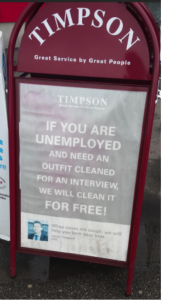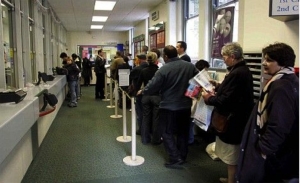
The four factors when considering Customer Experience
Customers want more than a functional experience in life. In our consumer society where goods and services are available almost instantly, the experience of the process or products and the way it makes people feel becomes crucial. One may tend to think this only applies to B2C companies. However, this applies equally to B2B companies as emotions play a subconscious part in the choice of partner or vendor.
Customer Experience1 is now ubiquitous phrase in service delivery and represents the whole emotional experience of the customers who receive a service. People involved in service design often represent themselves in the journey and their own emotions. This is a mistake and there is not enough thought given to what may be very different emotional needs for different cohorts of customers. For example, in a hospital, an Operations Manager view of the meaning of a diagnostics process may be very different to their typical customer. The Operations managers will consider that the ease of booking system and a short wait time are the (emotional) priorities to avoid frustration. However, the service users may be more concerned with the wait-time for results, and the desire to bond with the people who have the same ailment (in the waiting area).
Self Determining2 theory and other research3 show that beyond adequate functional process, customers want four things in in order to satisfy their emotional needs or experiences:
- Competence: The desire to control and master the environment and results of their activities.
- Meaning: The need to do activities that are significant to them or others. The activity benefits them or their loved ones.
- Belonging: Experience caring for other people and being cared for. Feeling part of a group, friendship, crowd etc. in a positive harmonious way.
- Autonomy: Ability to act in harmony with free will and deep desires – that is not borne out of selfishness.
These coincide with Maslow’s hierarchy in which the human needs move upwards in his classic pyramid towards esteem, belonging and self actualisation.
If you run a service organisation it is important to understand these factors for your customers as they go through your service process. The combination of factors will vary depending on customer circumstances, background, needs etc. For a leasing company I worked with, that rented cars and motorcycles, getting an understanding for the reason of why the customer wanted the product (for work, pleasure, a status symbol) was an important factor in service excellence by first understanding meaning.
Examples of these four needs
Competence
Organisations such as ebay and Amazon accommodate customer competence, by offering them a variety of choices, their Prime Service, alternative markets (you can buy the product from a competitor) or at a second-hand price. At a restaurant an à la carte menu allows the customer to exercise the competence of choice.
Belonging
Apple Inc. has very much belonged in mind when it comes to emotional buy for their products. Although this has worn out somewhat, owning an apple product means to be part of a ‘group’. So many conversations are struck up when two Apple ‘strangers meet’, an example of belonging.
Timpson’s offer free suit cleaning for the unemployed, as they recognise the importance of ‘belonging’ to the human group, by the way, you look, particularly for important events.
Meaning
We may have motivations to ‘make money’ or have the instinct to feed the family, however, given a choice, we would rather be carrying out activities that are meaningful. For many, hobbies have these deeper meaning (e.g. gardening, painting, volunteering) even when there is no financial or extrinsic reward. The business world has always incorporated this meaning in advertising (e.g. an advert that depicts having an expensive Swiss watch as something meaningful between generations). This meaning has existed in personal services (a hairdresser often ‘morphed’ into a counselor). Most visits to a restaurant with a close friend is about the meaning and the value of the conversation than the choice of restaurant.
Autonomy
People only want to do activities that seem right for them and don’t wish to be put through hurdles. Having to queue to get your own money out from a bank is a thing of the past. For things that matter much to people life’s, a roof over their head, health, being able to communicate with their colleagues and loves ones, autonomy is crucial. NatWest Bank offers an interesting service of being able to withdraw cash, in an emergency, e.g. a lost debit card, by offering a one-off pin number for use at an ATM without a card. Many bank loans are built on allowing this autonomy (from buying a car, to paying for a wedding). Tesco the supermarket, has trialed slow lanes at check out for people who don’t want to feel rushed and have a sense of autonomy.
Each cohort of customers will have a different balance of these four customer experience needs and will allow us to get things right for the customer or empathise when inevitably mistakes occur or a service cannot be delivered to expectation. Understanding these four factors at a deeper level will allow for stickier customer and enhanced reputation.
An organisation that truly meets customer’s deeper needs as part of its customer experience, can work in a harmonious way through the customer’s ‘end to end’ journey. This reduction in friction with the customer can allow a powerful leveraging of opportunity and reap the benefits of greater market volume, margins, and reputation.
Here are some process instances where understanding these needs could make all the difference.
a) NEW ENTRANT: When a person first enters a new country or organisation what he/she is looking for the most is the sense of This has never been factored into many organisations. A moody passport control officer, an organisation in which you are not welcomed on the first day you join, or a hobby club in which you ‘need to prove’ yourself to belong are all examples where the emotional experience of belonging will be low.
b) CUSTOMER IN A SERVICE PROCESS: When customer has to do various activities in a process, then meaning becomes very important to engage with customers. Why is it meaningful to get that bureaucratic form filled in? Why do certain standards need to adhere?. Why does the customer need to wait a few days for approval? Giving customers meaning reduces frustration and acceptance of time taken.
c) DELIVERING A COMPLEX PROCESS: We need to give all customers/stakeholders choice to give them a feeling of and ideally have choices. Having a choice and ability to make a judgment gives that wonderful feeling of competence and empathy to the person. This competence is particularly useful for complex health care setting where the service users has an important part to play in what can be a disparate process.
d) SERVICE OUTCOME: Many people don’t consider why someone ultimately needs a service. It is to please a loved one? Is it to address a risk or just instant gratification? What autonomy does the goods or service give the customer? Understanding this can make all the difference in the customer experience and allow much more price elasticity.
Organisations are hiring Customer Experience teams like never before. As well as studying customer journeys and opportunities around digital, they need to get to the heart of customer feelings. In fact making more sense of feeling could make redundant the need for added process functionality (e.g. speed). Organisations could avoid cost as well as enhance reputation.
Ketan Varia
Sources
- Design Thinking UX, Oracle. https://oracledesign.co.uk/what-is-user-experience-ux/
- Based on the work of Edward L. Deci and Richard Ryan – Self Determining Theory – Innate needs of Human Beings. https://en.wikipedia.org/wiki/Self-determination_theory
- Darrell Mann, Systematic Innovation ezine http://www.systematic-innovation.com/past-e-zines-2011-2017.html

